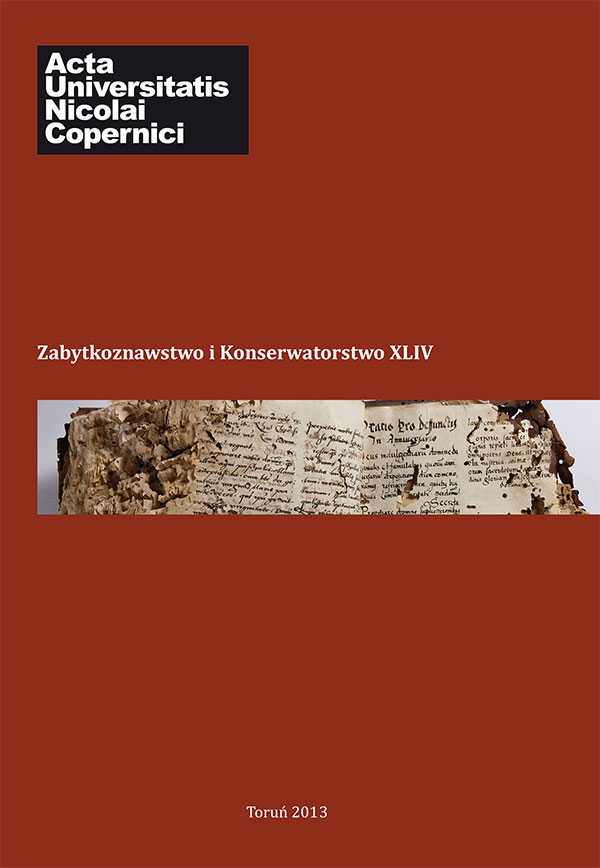Kolorystyka fasad zabytkowych budynków z przełomu XIX i XX wieku Olsztyna i małych miast Warmii i Mazur
DOI:
https://doi.org/10.12775/AUNC_ZiK.2013.014Abstrakt
The article presents the results of several years of studies of colour schemes of historical building facades within the area of Olsztyn and small Warmia and Masuria towns, carried out by the author of this publication between 2007 and 2011. The reason for undertaking the studies are extensive repairs and building works, resulting in removal of often damaged historical plasters, as well as loss of the authentic appearance of historic buildings.
The analysis showed that the majority of the facades in the area were painted in different shades of yellow, orange, beige, pink, violet, brown, grey and blue. Less often were recognized shades of green. Shades of grey were applied more from the eighties of 18th century. At the turn of the 20th century the facades could have violet colour. Shades of green were applied more often at the beginning of the 20th century.
Many of the buildings covered originally uniform colour within all parts of the facade. Sometimes colored facades had slightly lighter or white painted cornices. A large group of the facades had a varied colors within the walls and details. Among the colorful statements in them that can be observed some domination. In a few cases there were recognised connections of violet or pink with ochre or beige and ecru shades. In the case of the buildings merging parties plastered and bricked can be seen a colour scheme, which used architects designing their facades. It refers to the statements of the brick and the plaster with a limited range of colour range: ochre, beige and orange.
The analysis provides information on fashion and trends popular in the area in colouring of the facades of historic buildings at the turn of the 20th century on the territory of the present province of Warmia and Mazury Conducted researches can be used as a basis for reconstruction and recreation of polichromy historic buildings in the area.
Pobrania
Opublikowane
Jak cytować
Numer
Dział
Licencja
CC BY-ND 4.0. Posiadaczem prawa autorskiego (Licencjodawcą) jest Autor, który na mocy umowy licencyjnej udziela nieodpłatnie prawa do eksploatacji dzieła na polach wskazanych w umowie.
- Licencjodawca udziela Licencjobiorcy licencji niewyłącznej na korzystanie z Utworu/przedmiotu prawa pokrewnego w następujących polach eksploatacji: a) utrwalanie Utworu/przedmiotu prawa pokrewnego; b) reprodukowanie (zwielokrotnienie) Utworu/przedmiotu prawa pokrewnego drukiem i techniką cyfrową (e-book, audiobook); c) wprowadzania do obrotu egzemplarzy zwielokrotnionego Utworu/przedmiotu prawa pokrewnego; d) wprowadzenie Utworu/przedmiotu prawa pokrewnego do pamięci komputera; e) rozpowszechnianie utworu w wersji elektronicznej w formule open access na licencji Creative Commons (CC BY-ND 4.0) poprzez platformę cyfrową Wydawnictwa Naukowego UMK oraz repozytorium UMK.
- Korzystanie przez Licencjobiorcę z utrwalonego Utworu ww. polach nie jest ograniczone czasowo ilościowo i terytorialnie.
- Licencjodawca udziela Licencjobiorcy licencji do Utworu/przedmiotu prawa pokrewnego nieodpłatnie na czas nieokreślony
PEŁEN TEKST UMOWY LICENCYJNEJ >>
Statystyki
Liczba wyświetleń i pobrań: 2453
Liczba cytowań: 0



